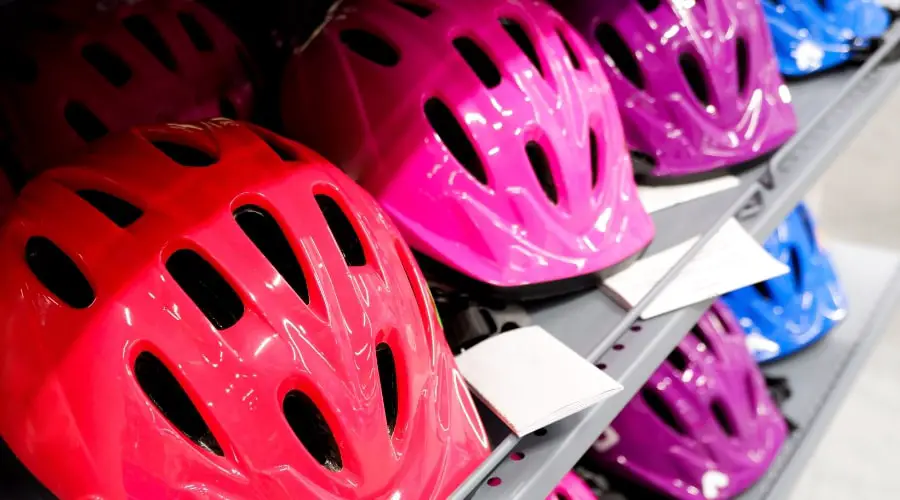When it comes to riding bicycles or motorcycles, safety is paramount. And a crucial part of that safety is the helmet. It’s not just about having a helmet but also about the right fit. So, what happens if your helmet is too big?

Importance of Correct Helmet Size
Having a correctly sized helmet can mean the difference between life and death in a severe accident. It’s not an exaggeration but a fact backed by numerous studies and real-life incidents.
Dangers of an Oversized Helmet
Dangers while riding
An oversized helmet can cause several issues while you’re riding. The helmet may move around on your head, obstructing your vision, and even become a distraction.
Risk of Injuries
In case of an accident, an oversized helmet won’t provide the protection you’d expect. It may even come off, leaving your head vulnerable to injuries.
Identifying a Poorly Fitted Helmet
Signs of an oversized helmet
If your helmet wobbles or shifts when you shake your head, or if it can be easily removed without unbuckling, it’s likely too big.
Helmet fitting test
A simple test is to put the helmet on and try to move it side-to-side and up-and-down. If it moves easily, it’s not the right fit.
The Science Behind Helmet Design
Helmet structure
Helmets are designed with an inner lining that absorbs impact and an outer shell that distributes the force over a larger area.
Purpose of proper fit
A correctly fitted helmet ensures that the force of an impact is properly distributed and absorbed, minimizing the risk of injury.
Consequences of a Poorly Fitted Helmet
Reduced visibility
A helmet that’s too big can slide down over your eyes, reducing your visibility.
Impaired hearing
An oversized helmet may also cover your ears more than necessary, impairing your ability to hear traffic and other important sounds.
Decreased protection
As mentioned earlier, an oversized helmet won’t provide the level of protection you need in an accident.
Real-life Instances of Accidents Caused by Oversized Helmets
There have been several instances where an oversized helmet has led to tragic outcomes, emphasizing the importance of a proper fit.
Correcting Helmet Size
Understanding helmet sizes
Helmet sizes vary by brand and model. It’s important to measure your head circumference and compare it with the manufacturer’s size chart to ensure a proper fit.
Adjusting helmet fit
Some helmets come with adjustable padding. If your helmet is slightly big, you can use these to get a better fit.
Related: How Do You Fit a New Helmet?
Choosing the Right Helmet
Different helmet types
From full-face to open-face and half helmets, there are different types for different riding styles. Each type offers a different level of protection.
Finding your helmet size
To find your helmet size, measure the circumference of your head at its widest point – usually just above your eyebrows. Then, compare this measurement with the manufacturer’s size chart.

Helmet Maintenance and Replacement
When to replace your helmet
Helmet manufacturers recommend replacing your helmet every 3-5 years, even if it hasn’t been involved in an accident. The materials can degrade over time, reducing their protective capabilities.
Maintaining your helmet fit
Over time, the padding in your helmet can compress, making it feel looser. You can replace the padding or adjust the straps to maintain a proper fit.
The Role of Legislation in Helmet Safety
Helmet laws
Most regions have laws requiring the use of helmets for certain activities. These laws are there to protect riders, but they can only do so much. It’s up to each individual rider to ensure their helmet fits correctly.
Role of safety standards
Safety standards, such as those set by the Department of Transportation (DOT) and Snell Memorial Foundation, ensure helmets meet certain protective criteria. But again, these standards can’t guarantee a good fit.
Related: Why Does My Helmet Hurt My Head?
Frequently Asked Questions:
What are the signs of a too-big helmet?
If your helmet moves around easily on your head or can be pulled off without unbuckling, it’s probably too big.
How can I ensure a proper helmet fit?
Measure your head circumference and compare it with the manufacturer’s size chart. Also, try on several helmets to find the one that fits best.
What should I do if my helmet is too big?
If your helmet is significantly too big, the safest option is to get a new one. If it’s slightly big, you can try adjusting the padding or the straps.
How often should I replace my helmet?
You should replace your helmet every 3-5 years, or sooner if it’s been in an accident or shows signs of damage.
What role does legislation play in helmet safety?
Laws and safety standards ensure that helmets meet certain protective criteria. However, it’s up to each individual rider to ensure a proper fit.
Concluding Thoughts
A helmet is an essential piece of safety equipment for any rider. However, an oversized helmet can lead to serious consequences. It’s important to take the time to find a helmet that fits properly, even if it means trying on several different styles and sizes.
Helmetslab is a website that focuses on providing in-depth reviews and information about different types of helmets, including motorcycle helmets and others helmets. I am writing a post with proper research on the info that helps helmet users.

